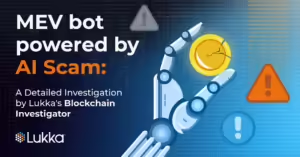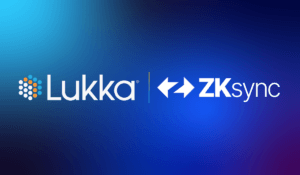Author: James McDonald, Product Manager in Data and Analytics
In part two of the Beyond Bitcoin series, we discussed how the application of a standardized sector methodology can benefit investors through increased transparency and ultimately help in the adoption of digital assets. We covered how digital asset sectors assist with portfolio management, applying investment guidelines, indexing, and benchmark construction, as well as providing the opportunity for the creation of new investment products.
With such clear benefits, why haven’t we seen a standardized sector classification by the industry that has grown for over 10 years since the launch of Bitcoin??
In part three of the Beyond Bitcoin series, we dive into the challenges of adoption as well as mitigating factors that firms should consider when adopting a digital assets classification system.
Challenges of Sectoring Digital Assets
The broad adoption of a digital assets sector classification system has the capability to provide When attempting to classify digital assets into various levels of a sector taxonomy, there are many challenges that Investors should be aware of:
- Speed of the Digital Assets Market: The crypto asset ecosystem has evolved rapidly with the rapid creation of new ecosystems, projects, web3 use cases, protocol updates, and the list goes on. It can be difficult for an individual or entity to keep up with one niche area of the market, let alone trying to stay in touch with developments across the entire ecosystem.
- While one could argue this is a necessary component of a growing ecosystem, staying abreast of these changes can be problematic when attempting to leverage a full-scale sector classification system.
- Lack of Standardized Quantifiable Criteria for Sectoring Digital Assets: Existing classification systems, such as the Global Industry Classification Standards (GICS), will leverage standardized quantifiable criteria such as revenue or earnings to help classify a public company within the equities market. However, a standardized metric such as revenue that applies to all digital assets doesn’t exist yet, making it challenging to implement a classification system in an impartial way. To date, most providers of classification systems will classify an asset based on the main use case of the underlying asset or project and how that use case fits into the broader ecosystem.
- Lack of Standardized Terminology through the Digital Asset’s Markets: Most veterans of the digital asset markets would agree that the crypto ecosystem has a jargon and abbreviation problem. Terms like DeFi, CeFi, HODL, WAGMI, IDO, token vs coin, NFTs, Dapps, Layer 1, 2, 3, and now Layer 0 protocols, are just a few examples that could cause a headache for even the most seasoned investors.
But the underlying problem when defining a sector classification is that different entities may interpret crypto jargon in different ways. For example, the term Decentralized Finance (DeFi) could mean net new financial services utilizing digital assets (such as yield farming or liquid staking), or disrupting legacy financial services in a decentralized way (Borrowing/Lending in a P2P manner), or both. This can pose challenges when examining the categorization of sectors because there may not be one agreed upon definition, and differing definitions across entities for the same terminology create confusion, especially for new investors.
When considered individually, these challenges can be troublesome and if aggregated they can lead to some common mistakes that occur when classifying digital assets. Not having effective mitigation in place for these challenges creates deeper problems when forming a classification hierarchy. Some of these challenges include:
- Lack of Asset Coverage: Some providers may opt to only choose the most liquid assets or specific types of digital assets, ignoring the broader market picture and potentially missing out on new or emerging types of assets in the space.
- Inadequate Classification Granularity: The digital assets markets are complex which can cause some classification systems to not go deep enough when trying to classify assets. Granularity in a classification system is critical to ensuring assets are categorized correctly, and by choosing to focus on a specific asset universe or specific segment of the market, existing classification systems may lack the needed depth to provide value to investors.
- Classification Structure that is too rigid: The speed of disruption and level of innovation within the digital assets market is historical. Some classification providers may only provide one classification for one asset (based on one specific use case), which can be troublesome when assets span multiple different use cases and niches within the crypto ecosystem. If the classification system is too rigid and not able to encompass a primary/secondary structure, investors may miss the bigger picture for a specific asset
Addressing the Challenges
Unfortunately, when examining the above challenges, we lack a single mitigating action to address the complexities of classifying digital assets. The challenges outlined above are the product of rapid growth in a new industry that is changing the way assets are exchanged.
What can investors, and the broader market, do in the short term to help mitigate the challenges of digital asset classification while they continue to mature?
- Robust Governance and Oversight Framework from Classification Providers: Digital Assets Market participants should look for a sector classification provider that has an institutional level of governance that is rooted in open and transparent communication.
Due to the nascent nature of the market, sectoring digital assets can be more of an art than a science. Providers in the space can help mitigate the uncertainty by establishing a framework for oversight and governance that seeks to standardize the digital asset sectoring process through policies such as:
- Sector additions and deletions are subject to an oversight board. Formal policies and procedures can address the breadth and depth of the market considered in the sector taxonomy,
- Implementing guidelines for communicating classification updates with consumers when there are changes in the sector taxonomy or changes to the sectoring of specific assets,
- Institutional quality data checks that are reviewed on a set frequency to ensure that the classification structure is maturing along with the evolution of crypto assets,
- Robust methodology that outlines the process for assigning a sector to an asset in order to promote transparency in absence of standardized reporting metrics within these markets.
As the Digital Assets asset class grows and matures, the demand for new products and tailored exposures from market participants continues to increase. Applying a standardized sector classification system can be burdensome to new market participants or service providers who operate in the digital assets ecosystem. However, trusted providers are already working to address these short-term growing pains and as the market continues to mature, standardization will follow.
These challenges are not insurmountable and the net impact of applying a sector classification system will undoubtedly make digital assets more accessible, inclusive, and understandable for new investors.
About Lukka
Lukka is a firm that helps solve some of the greatest financial challenges in crypto and has the intellectual resources, along with the data and processing capabilities, to test hypothetical scenarios like the one here. For more information on how Lukka puts data to work across multiple finance sectors, traditional and decentralized, supporting industries from insurance to Formula E, go to our website at Lukka.tech
DISCLAIMER
THE INFORMATION CONTAINED IN THIS BULLETIN PROVIDES ONLY A GENERAL OVERVIEW OF CURRENT ISSUES RELATED TO DEBT FINANCING IN CRYPTOCURRENCY MARKETS AND SHALL IN NO EVENT BE CONSTRUED AS THE RENDERING BY LUKKA OF PROFESSIONAL ADVICE OR SERVICES. AS SUCH, THE INFORMATION PROVIDED IN THIS BULLETIN SHOULD NOT BE USED BY YOU AS A SUBSTITUTE FOR CONSULTATION WITH PROFESSIONAL ADVISORS. BEFORE MAKING ANY DECISION OR TAKING ANY ACTION REGARDING YOUR DIGITAL CURRENCIES OR THE DEBT TREATMENT THEREOF, YOU SHOULD ALWAYS CONSULT WITH AN APPROPRIATE FINANCIAL, LICENSED TAX, ACCOUNTING, OR OTHER PROFESSIONAL. TO THE FULLEST EXTENT PERMITTED BY LAW, IN NO EVENT WILL LUKKA(INCLUDING ITS RELATED ENTITIES, OWNERS, AGENTS, DIRECTORS, OFFICERS, ADVISORS, OR EMPLOYEES) BE LIABLE TO ANY READER OF THIS BULLETIN OR ANYONE ELSE FOR ANY DIRECT, INDIRECT, OR CONSEQUENTIAL LOSS OR LOSS OF PROFIT ARISING FROM THE USE OF THIS BULLETIN, ITS CONTENTS, ITS OMISSIONS, RELIANCE ON THE INFORMATION CONTAINED WITHIN IT, OR ON OPINIONS COMMUNICATED IN RELATION THERETO OR OTHERWISE ARISING IN CONNECTION THEREWITH.



